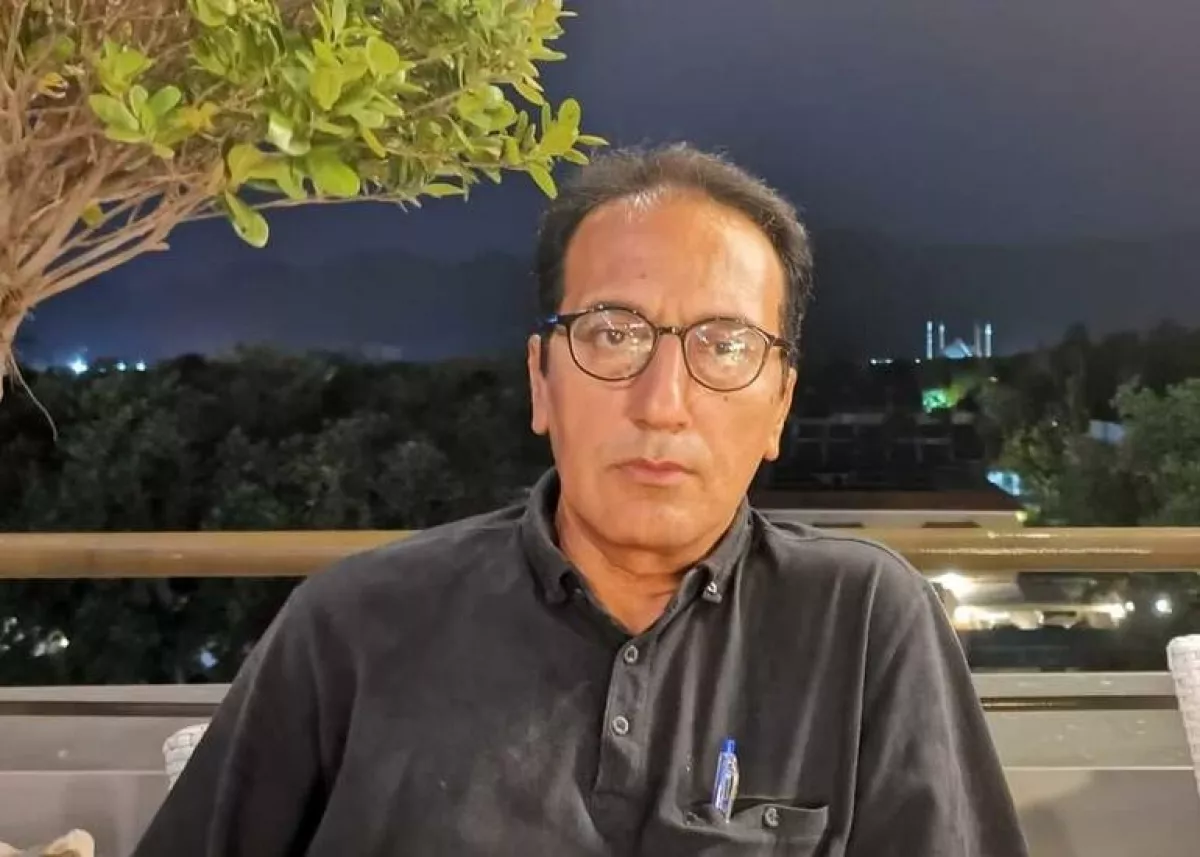Landmines, not peace: Armenia’s deadly footprint in Karabakh Article by Tazeen Akhtar, The Nation
The Pakistani publication The Nation has featured an article by Tazeen Akhtar addressing the critical issue of landmines in Azerbaijan, particularly in the territories of Karabakh liberated after the Second Karabakh War. This insightful piece sheds light on the ongoing dangers posed by landmines to civilians, the environmental damage caused, and the challenges Azerbaijan faces in mine clearance efforts. Caliber.Az presents a modified version of the material, highlighting the humanitarian and developmental impact of unexploded ordnance, as well as the urgent need for international cooperation and Armenia’s cooperation in sharing minefield maps to ensure lasting peace and safety.

"Do not enter areas where you are not guided!
Protect yourself and your loved ones from the danger of land mines!
These are the cautions that the citizens of Azerbaijan are supposed to observe strictly while returning to their homes in the territories of Karabakh, liberated from the illegal occupation of Armenia in the Second Karabakh war fought from September 27 to November 10, 2020, which was started by neighbouring Armenia but was concluded by Azerbaijan. Land mines continue to be a serious hazard in Karabakh, causing numerous casualties, particularly after the 2020 ceasefire agreement. The mediators should ask the Armenian side: Peace with Land Mines is possible?
On May 30, 2025, in Giziloba village of Tartar region, Huseynov Telman Ahmad oglu was injured in his right leg as a result of an anti-pedestrian mine explosion. On 31 May 2025, a mine incident occurred in the territory of Yenikand village of Goranboy region. A citizen, Abbasov Galib Kamran Oglu, fell into a land mine and lost one leg to save his life.
Azerbaijan is the only country worst hit by land mines in the world. The mines are taking the lives of innocent citizens even 5 years after the Second Karabakh War, fought from 27 September to 10 November 2020, which was started by neighbouring Armenia but was concluded by Azerbaijan. Armenia, despite all-out support from some powerful countries, had to lose the illegal occupation of Azerbaijani territories.
Licking their wounds, the enemy took revenge by laying land mines in these territories and refused to share the maps of the mines even after the signing of the peace agreement with Russia’s mediation. 12 per cent of the country’s territory is polluted by 1.5 million mines and an unknown number of unexploded ordnances.
According to official sources of Azerbaijan, since the end of the war in 2020, 361 citizens, mostly civilians, have fallen victim to mine explosions, resulting in 68 deaths and 293 severe injuries. Overall, 3,400 citizens have suffered from mines, including 358 children and 38 women.

Tartar, Aghdara, Kalbajar, Lachin, Shusha, Fuzuli, Gubadly, Jabrayil, Zangilan are the main territories where Armenia fixed the land mines while retreating from these illegally occupied regions of Azerbaijan.
The land mines are not only taking the lives of innocent people but also damaging the environment and the fertility of the soil as well.
This side of the problem was highlighted in the 29th Session of the Conference of the Parties to the UN Framework Convention on Climate Change – COP29, hosted by Azerbaijan in Baku.
Plastic waste resulting from an explosion entails environmental consequences by negatively impacting soil structure. Mines that remain unearthed for a long time can lead to hazardous chemical reactions. The soil not in use due to the threat of mines is subjected to erosion and abrasion.
Azerbaijan, so far, has cleared more than 200 thousand hectares of land from the danger of mines and other explosive remnants of war. More than 119,946 mines and unexploded ordnances have been recovered. Yet, mined areas stretch far beyond that. Mines are easy to plant, but mine clearance is a much more difficult and complex process.
President of Azerbaijan, Ilham Aliyev, rightly said at an event previously held in Baku, “Today, mines and unexploded ordnance continue to remain an acute problem posing a threat to people’s security across many countries. Along with jeopardising human life, the mines seriously challenge socioeconomic development, damage the environment and cultural heritage, hinder post-war recovery and development initiatives, and ultimately impede the Sustainable Development Goals.”
Approximately 800 thousand citizens are to be rehabilitated in the newly liberated areas where the land mines have been fixed. Development of infrastructure is also an urgent need there because Armenia destroyed everything while retreating, including the basic living facilities. The mines are not only taking lives but also hindering the pace of development.
Azerbaijan has mobilised all its strength and is using the most advanced and cutting-edge technologies available worldwide, implementing measures to enhance efficiency in mine clearance that have significantly improved the situation compared to previous years, but total clearance is not possible without the maps that Armenia is not ready to share.

Sensitising the international community about their contribution to this human safety task, the country is implementing humanitarian demining at its own expense. Adequate political and practical support from the international community for mitigating the humanitarian consequences of mines and de-mining the affected areas is of utmost significance.
Azerbaijan has simultaneously launched multiple initiatives to attract the international community’s attention to this matter. The country, last year, officially declared humanitarian de-mining as the 18th National Sustainable Development Goal, and is working to ensure the recognition of this issue as the UN’s 18th Global SDG.
An initiative has been launched to establish a Special Contact Group on Humanitarian Demining within the Non-Aligned Movement. The Contact Group has been operating since September 2023.
At the 15th meeting of the states-parties to the “1954 Hague Convention for the Protection of Cultural Property in the Event of Armed Conflict,” held in 2023, a resolution titled “The Impact of Mines on Cultural Heritage” was adopted upon Azerbaijan’s initiative. As a follow-up to this momentous resolution, Azerbaijan hosted a special conference in Aghdam this May, themed “The Impact of Mines and Unexploded Ordnance on Cultural Property.”
These measures demonstrate Azerbaijan’s determination to tackle the mine issue, while on the other hand, Armenia has been reluctant to contribute to these efforts, adopting every cowardly and tricky way to hit and hurt Azerbaijan.
The steady increase in the number of mine victims is associated with Armenia’s refusal to provide accurate maps of the mines. International community, especially the supporters of Armenia, who also pose as the mediators and peace lovers, should persuade Armenia to act humanely by sharing the maps of the land mines," he wrote.
Editor's note: The author of this article, Tazeen Akhtar, is a member of the Standing Committee of the Council of Pakistan Newspaper Editors (CPNE) and an expert on the South Caucasus.
By Aghakazim Guliyev








